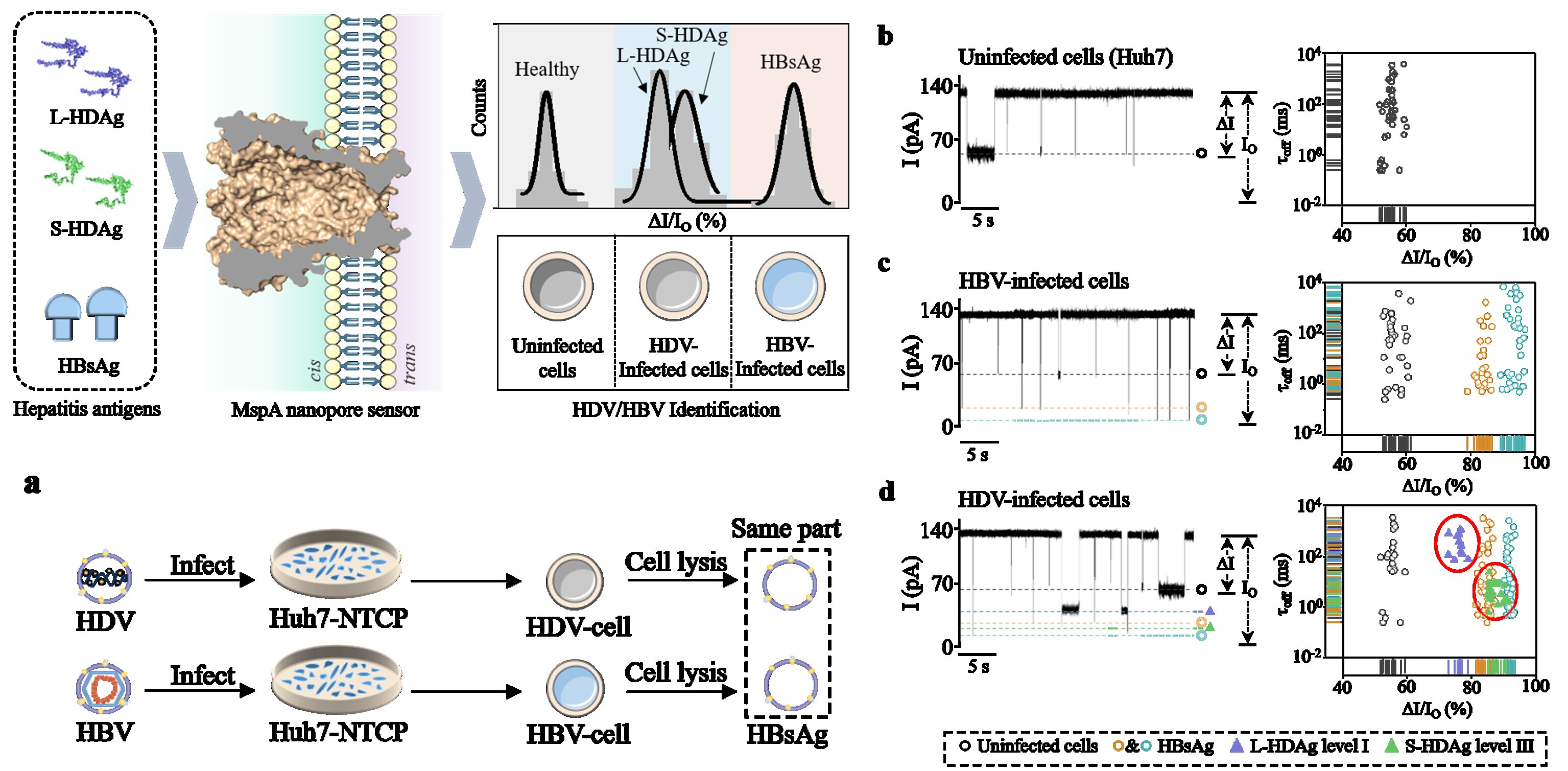Chronic hepatis B with HDV (Hepatitis D Virus) coinfection is considered as one of the most serious forms of human viral hepatitis that can lead to cirrhosis and hepatocellular carcinoma. However, the high GCratios in HDV genome and the same surface antigen protein HBsAg (Hepatitis B surface Antigen) in virus particles assembly make it hard (or ignored) to diagnose HDV co-infection with HBV (Hepatitis B Virus) using traditional methods (i.e., PCR, antibody-surface antigen reaction), further limit to build epidemiologic information on HDV. Thus, developing efficient detection for key pathogenetic molecules of HDV becomes key experimental questions for HDV diagnosis. In these key molecules, specific HDAgs (Hepatitis D Antigens, including large and small HDAgs) are the solitary ribonucleoproteins encoded by HDV genome, which function in viral life cycle in significant ways.
Recently, researchers in Chongqing Institute of Green and Intelligent Technology, Chinese Academy of Sciences (CIGIT, CAS) proposed a direct and precise detection for large and small HDAgs using nanopore sensor in asymmetric ionic liquids electrolyte condition. What's as obvious from nanopore measurement for either antigen is that the results allow discriminate large and small HDAgs as well as antigen-ribozyme complex in serological assay. More importantly, it is ascertained by nanopore test that HDAgs can be efficiently distinguished with HBsAg in HBV-infected cells, enabling simultaneous identification of HBV- and HDV-infected cells. In conclusion, the proposed nanopore can provide specific and efficient detection of physiological indicators for different HDV infections at molecular and cellular levels, and should benefit severer HBV/HDV co-infected hepatitis diagnosis and therapy.
This work is published in Materials Today Physics (2024,46,101479.). Lingyu Zhao (Graduate student of Chongqing University of Posts and Telecommunications) is the first-author, Prof. Dr. Liang Wang (CIGIT, CAS) and Prof. Dr. Yong Lin (Key Laboratory of Molecular Biology of Infectious Diseases, Chinese Ministry of Education, Chongqing Medical University) are corresponding authors. The work was supported by the National Key Research and Development Program of China, Chongqing Talents-Exceptional Young Talents Project, The Youth Innovation Promotion Association of Chinese Academy of Sciences.
Figure 1. Nanopore Efficiently Identifies Hepatitis D/B Virus Antigens in vitro Assay.


